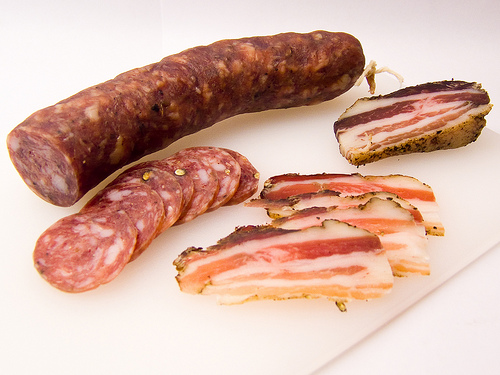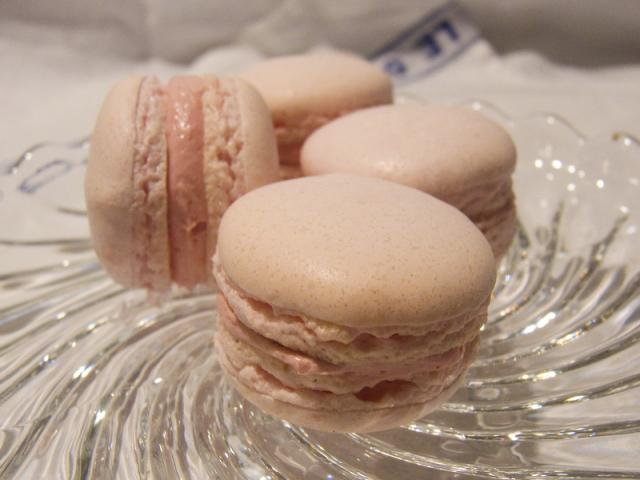
TheSwede
-
Posts
417 -
Joined
-
Last visited
Content Type
Profiles
Forums
Store
Help Articles
Posts posted by TheSwede
-
-
I've must been in St Martin at exactly the same time as you!
I'm sorry I missed BO - sounds like the best place in town. Generally, the restaurants wasn't that interesting. The local "marché" was fantastic though and if you missed shopping there (closed at 1 pm) there was a guy at the quay selling local oysters for 4 EUR per dozen during the afternoons. I lost count of the number of oysters I ate that week.

I did try two star "Richard et Christopher Coutanceau" in La Rochelle before going to Ile de Re (good but not fantastic).
-
Thanks! Will probably visit Kødbyens Fiskebar during the weekend.
It was really excellent. I had their various raw starters together with a nice champagne. It is not a restaurant for some quite dining though, more of a "start the evenings party" place.
-
Thanks! Will probably visit Kødbyens Fiskebar during the weekend.
-
Good work on the shucking! Looks like a lovely party.
I really dislike oysters on salt. I've been known to not ordering oysters in a restaurant because they serve them on salt. First, I like my oysters cold. But more importantly, rock salt stick to moist oyster shells and that salt tend to come loose when you are eating the oyster. Unless you are careful and brush the oysters off you end up with mouthful of salt.
-
For me, the hardest part of the chucking is getting the knife those first milimeters into the joint. Often, it is not obvious at all where the joint actually is (at least with the french/dutch Fine de Claire I usually eat). In those situation, just push the knife in where you think the joint should be. A little violence goes a long way and you can always clean up the shell fragments afterwards...
-
Anyone care to do an update on Copenhagen? What is hot and exciting? Will anything be open during july?
-
I would like to disagree on the chilling. We always serve our aquavit very cold. I think it adds to the experience, first the intial shock of super cold alcohol followed by the actual taste as the aquavit warms up in your mouth.
Besides christmas, the other major "skål" holiday is midsummers eve, which we celebrated this friday.
-
"Sucre glace" is sugar with a little bit of starch added, ie icing sugar.
-
As to your question regarding rillettes from duck confit, I'm not sure but I will say that one restaurant I know that does excellent charcuterie sometimes serves rillettes (or something very similar) that have been turned into a hot pan, crisped, and served browned-side up. They're excellent.
I've done that with pork rilettes, but it should work with duck too, since they spend a very short time in the pan:
I did a rilette "sausage" wrapped in cling film, refrigerated it and then sliced into pucks which were quickly crisped on both sides.
-
Traditional rilettes can be browned to a varying degree depending on where they come from. My Larousse Gastronomie has a Balzac quote where he calls rillettes for "brown jam".
I have sucessfully made pork rilettes that had a very nice medium brown color and a deep nice flavour. A later batch which wasn't browned was still nice but not quite as good as the previous.
No idea how duck would fare though, Larousse makes no mention of browned duck rilettes. Might end up dry perhaps?
-
Dagens Nyheter, Sweden's largest newspaper, has a review of newly reopened Mistral today (see above for Mistral info).
The shocker is that Mistral only recives 3 points out of 5, which means "ok". The gist of the review is that Mistral is very expensive, the portions are miniscule, the food is pretentious and sometimes bland. On the other hand DN says that the execution is flawless, the ingredients exceptional and that some of the food is really really good. Or would have been, if you would have gotten more than half a bite on your plate.
Mistral was also reviewed by Svenska Dagbladet, Sweden's second largest newspaper, two weeks ago. They on the other hand give their highes mark, six points out of six, a grade they usually reserve for Mathias Dahlgren, Frantzén-Lindeberg etc.
So, the opions are evidently divided.
-
Definitely try the gelatine filtration: Gently heat some of the liquid, add 0.5% gelatine (by weight of the total liquid), add the rest of the liquid when gelatine is dissolved.
Freeze overnight, then place in a chinoise in the fridge and let the clear liquid slowly strain out over the next two days.
I don't know how it will affect the acids, but you won't get any "ccoked" taste.
-
No, I don't think you want to boil your orange juice (although the egg white probably is harmless once it coagulates). But I though it interesting that traditional clarification evidently works on a very similar substance, a vegetable juice with a lot of pulp.
-
Calcium helps with gellation, but sugar will inhibit. I always process my mixes in the blender, sprinkling the gum into the vortex. Allowing 2 minutes or so of hydration time, then adding sugar. Any time I've added sugar pre-hydration, it never sets.
Do you use boiling water in the mixer, mix/hydrate and then add sugar? Do you need to re-heat or is that enough to make the gel?
I usually have problems hydrating both gellan and agar, but hydrating in a small amount of water first and then adding flavours/sugar/acids might help.
-
...
The risk with all this is that the smallest bottles that Soda Club offers are 500ml - essentially ruining a perfectly fine bottle of booze if things go sideways.
Underfilling the bottle won't hurt, will it?
-
I've read about traditional raft clarification beeing applied to a tomato consommé (in Gordon Ramsey *** Chef perhaps?), ie mix finely diced vegetables with egg white and simmer slowly, ladle off the clear consomme.
Gelatine/agar clarification should work too, search for the thread here. As noted in the link above, it won't be as efficient as enzymatic clarification but on the other hand you probably already have the ingredients.
-
Check out the last few pages this thread for impressions of both MD and Oaxen:
http://forums.egullet.org/index.php?showtopic=11537
Oaxen has opened for the season so I guess the easiest way to find out about availability is to give them a call or send them a mail:
-
My tuscan style salami (from a few pages back) is finished and almost all of it has already been eaten.
After approximately three weeks they were done, measuring by weight loss. However the taste wasn't that great. There was a little too strong yeasty taste from the fermentation and the actual sausage tasted quite bland.
Now, after a couple of more weeks they are great. I have wiped the sausages to remove some of the yeasty taste (which was mostly on the surface) and the taste has matured a lot.
There is also some panchetta in the picture.

-
The big problem with making either of these recipes at home is getting veal stock.
You can just as easily use brown chicken stock. Or in the case of the fricasse, just make a quick stock from your browned and chopped chicken carcass. You might not exactly replicate the depth and mouthfeel of the veal stock based sauces but you will still come pretty close and it will still taste very good.
-
...Actually, I cooked to the equivalent of 222F I live at 5000 feet, so I subtract 10 degrees...
Does that really make sense when cooking sugar/making caramel?
When cooking sugar, we use the temperature as an indication of water content (I guess?). Does the boiling point with respect to water content change with altitude?
Is there anything else that happens when you heat sugar to certain temperatures, like changes in the crystal structure?
-
anyone get any snaps of their creations?
I did these before I got the book, but they are made with the Hermé method:

-
Here is the result:

To the left is a piece of panchetta.
-
I cooked the extra sausage paste and ate it.

Tasted very good. I'll do the plastic wrap trick next batch.
-
The PH is the best way to tell the end of fermentation
I know, but then I both need an accurate way to measure ph and cut one of my precious sausages open!


Homemade (fresh) chorizo?
in Cooking
Posted
Ruhlman/Polcyn's Charcuterie (much discussed in at least two other threads in this forum) has a recipe for fresh Mexican Chorizo.